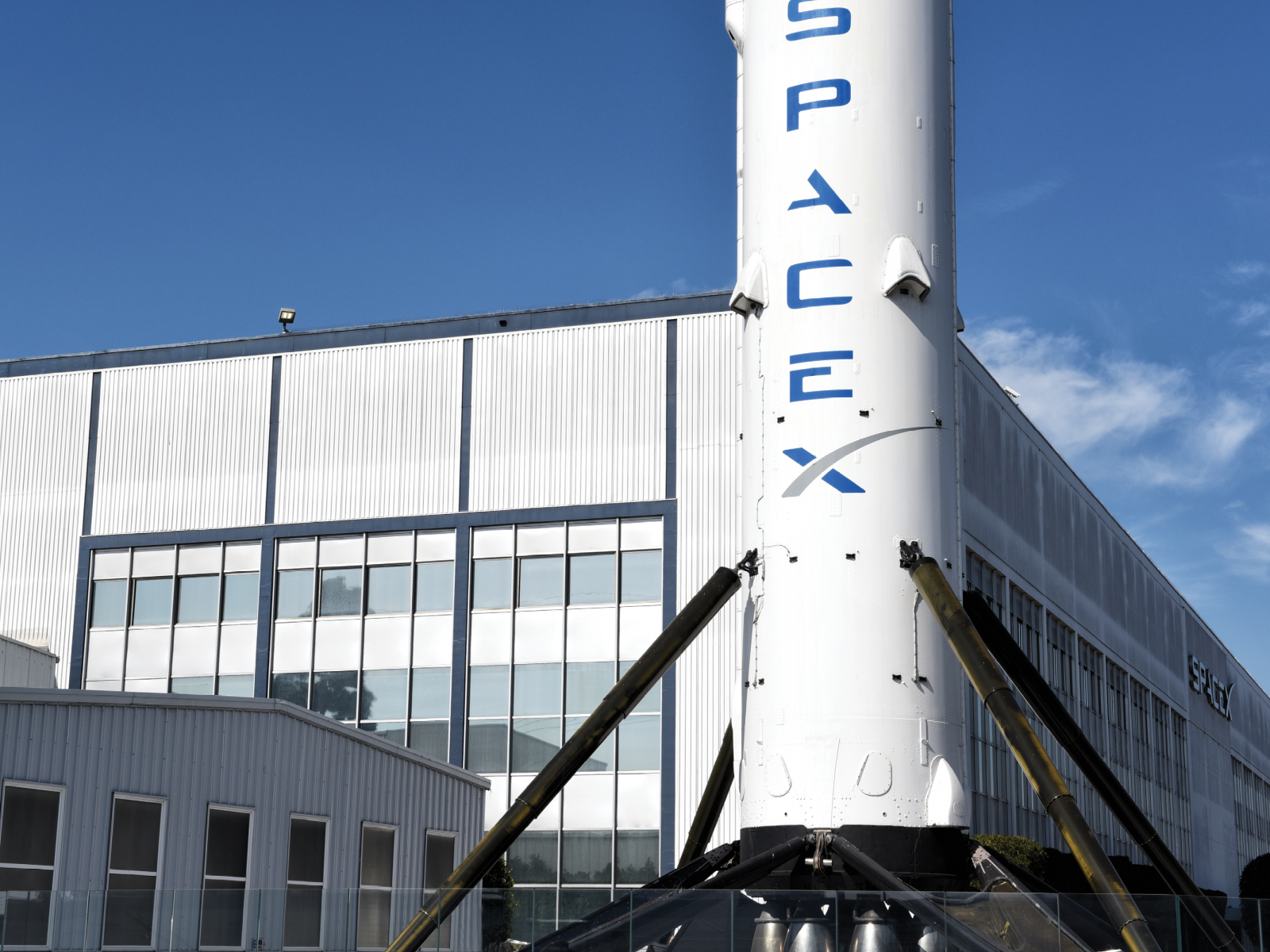After the space race dominated public imagination in the 1960s and ‘70s, interest in space exploration waned. Government organizations like NASA continued to experiment with space flight, but disasters such as the Challenger space shuttle explosion in 1986 — witnessed on live television — curtailed the romantic enthusiasm that defined earlier space exploration. Now, in the 21st century, the public is once again setting its sights on the stars, but this time commercial space flight is leading the charge.
Unlike government-sponsored space flights (such as those conducted by NASA), commercial space flights are funded by private organizations and entities. The 21st century has seen a number of private space flight companies come onto the scene, including SpaceX, the commercial space flight company founded by billionaire Elon Musk, and Blue Origin, a similar company founded by former amazon CEO Jeff Bezos. Both Musk and Bezos have lofty ambitions for their commercial space flight enterprises — Musk has famously claimed that his company will eventually colonize Mars, and Bezos hopes to construct a commercial space station that could be used for space tourism — but the roots of the commercial space flight industry were planted decades ago, and with much humbler intentions.
The History of the Commercial Space Flight Industry
Private companies have been involved in missions since the beginning of the space race. For most of the 20th century, private companies collaborated with the government to produce the advanced technology needed for space flight. Companies like Boeing that were already well-versed in aviation technology garnered government contracts to build rockets and spacecraft, while also focusing on more traditional ventures like producing airplanes and military equipment.
 Because the companies worked as government contractors on these projects, the government remained in control of how spacecraft were built and used. Thus, NASA and other agencies were still the driving force behind space exploration for much of the 20th century. But as the century came to a close, funding for government space programs was cut, and the U.S fell behind Europe and Asia in space exploration. As a result, American policy makers began wondering about how to reposition the U.S as a space leader in the 21st century.
Because the companies worked as government contractors on these projects, the government remained in control of how spacecraft were built and used. Thus, NASA and other agencies were still the driving force behind space exploration for much of the 20th century. But as the century came to a close, funding for government space programs was cut, and the U.S fell behind Europe and Asia in space exploration. As a result, American policy makers began wondering about how to reposition the U.S as a space leader in the 21st century.
America’s space anxiety culminated in the Commercial Space Act of 1998 — an investment initiative that lit a flame beneath the commercial space flight industry, giving it the power it needed to take off in the new century. The Commercial Space Act promoted increased commercialization at all levels of the industry, including commercializing the International Space Station (ISS), creating space ports outside of Florida (NASA’s homebase), and bolstering private launch services. Just as the government had rallied behind the commercial aviation industry decades earlier, the U.S was now rallying behind commercial space flight in the hopes that private companies could lead America back to its former glory.
In 2004, just a few years after the Commercial Space Act was passed, President George W. Bush advanced a new U.S Space Exploration Policy, which significantly redirected NASA’s priorities. Rather than focus on government projects, Bush directed NASA to support the development of commercial space flight, specifically so private companies could service the ISS. This policy, in combination with the Commercial Space Act, put the government’s full power behind the commercial space flight industry.
NASA followed suit by inviting private companies to pitch their own ideas and vehicles for space missions, many of which involved bringing supplies and people to the ISS. The companies would bid for NASA’s approval, and if NASA approved the project, NASA would fund the project. Once the private company finished its vehicle, NASA would pay for the use of it. The capital private companies received as a result of these agreements allowed them to invest in more and more projects — both for NASA and for their own benefit.
SpaceX — founded by Musk in the early 2000s — was one of the first companies to take advantage of NASA’s funding. The company developed rockets for NASA, and then used the technology it created to pursue Musk’s goals. In 2012, the first SpaceX cargo capsule arrived at the ISS, carrying supplies for the space station. This mission affirmed that private companies could build successful equipment that was relatively inexpensive without needing supervision from the government. After the SpaceX capsule’s successful mission, interest in private space companies grew and grew. Now, nearly 10 years later, commercial space flight is a multi-billion dollar industry, with dozens of competitors on the playing field.
The Innovations of Commercial Space Flight
Commercial space flight companies like SpaceX have been so successful in part because of the innovations they’ve made in the arena of space exploration. SpaceX, now the most prolific launch provider in the world, revolutionized rockets by slashing the cost to build them. Traditionally, rocket production was exceedingly expensive, and once rockets were launched they couldn’t be reused. For example, NASA spent up to $10.6 billion developing the space shuttles. Musk’s SpaceX, on the other hand, sells its Falcon 9 rocket for $62 million and the more powerful Falcon Heavy for $90 million. These figures don’t include the cost of the launch itself — which typically involves millions of dollars in fuel and infrastructure — but the relative cheapness of SpaceX’s rockets compared to those produced by the government makes it clear why even NASA has turned to private companies to build the vehicles.
SpaceX also cuts costs by reusing rockets — a practice that used to be unheard of. The ultimate goal, according to Musk, is to make rockets similar to commercial airplanes, capable of being used over and over again for a variety of purposes. SpaceX endeavors to return rocket boosters to earth and have them land gently on the ground, evading extensive damage. The company’s innovations in this area have inspired other commercial rocket producers, such as Rocket Lab, to develop their own reuse technology.
Despite the innovations commercial space flight companies have produced, there have also been a number of major setbacks. Space flight remains complicated and dangerous, and mistakes can easily turn deadly. Private space flight company Virgin Galactic, headed by billionaire Richard Branson, has suffered two fatal rocket accidents — one in 2004 and one in 2014. Re-earning the public’s trust after accidents like these has proved a challenge for Virgin Galactic, despite the company’s recent successes.
SpaceX has also experienced operational failures. In 2006, one of SpaceX’s rockets suffered a fuel leak that destroyed the rocket and its payload. Then in June of 2015, a SpaceX rocket exploded shortly after takeoff, destroying millions of dollars worth of supplies for the ISS. Though the outcomes were disastrous, Musk has framed these incidents as learning opportunities that paved the way for future triumphs, such as the company’s first private civilian spaceflight.
The ultimate goal of private companies like SpaceX and Virgin Galactic is to make space travel more accessible to civilians, but many experts still think we’re a long way away from anything like colonizing Mars. Still, people can expect that the 21st century will bring countless innovations in spacef light, some of which will revolutionize the way we live. Julius Keller, assistant professor in Purdue University’s School of Aviation and Transportation Technology, believes that developments in the field of commercial space flight are on track to change many aspects of people's lives.
“Within 120 years aviation went from its first powered flight in an airplane to placing astronauts on the moon to routine commercial space operations,” Keller said. “Urban Air Mobility (public transit systems that move people by air), space tourism, advanced automation with artificial intelligence are just a few more advancements the world will see and is seeing. These innovations will lead to revolutions in how we live.”
For Keller’s predictions to come true, commercial space flight will have to become better integrated into the world’s existing flight infrastructure. A key to successful integration will be more effective space flight management.
Integrating Space Flight and Aviation through Management
For commercial space flight to become accessible to the general public, it must be managed much differently than it is now. Space launch management as it exists today is essentially the same as it was decades ago. When a space flight is planned, air traffic managers are tasked with creating a restricted fly area around the launch site, and then all the flights that are scheduled to fly through the restricted area must be rerouted. Rerouting flights is a time-consuming endeavor, and it can have negative consequences for air travelers broadly. As an example, one rocket launch in the United States resulted in: 563 flight delays, an average of 62 miles added to all scheduled flights, an average eight-minute delay per flight, and 5,000 square nautical miles of airspace affected.
Because managing the logistics of space flight is so complex, launching vehicles into space on a regular basis is a tall order. However, aviation and aerospace managers hope to integrate space flight more seamlessly into the existing U.S. aviation infrastructure. By treating rockets more like airplanes, space flight could become a safer and more accessible enterprise. There is still a lot of work that needs to be done on this front — air traffic managers will need increased surveillance capabilities and access to more real-time launch information — but, if the technology and infrastructure was in place, people could depart for space much like they depart for trips abroad.
Purdue University teaches the advanced management and technical skills needed to push the aerospace and aviation field forward. Purdue’s 100% online Master of Science in Aviation and Aerospace Management prepares management leaders to meet the challenges that technological advancements in the aviation and aerospace industry present. Learn more about Purdue’s innovation program on the program’s website.

